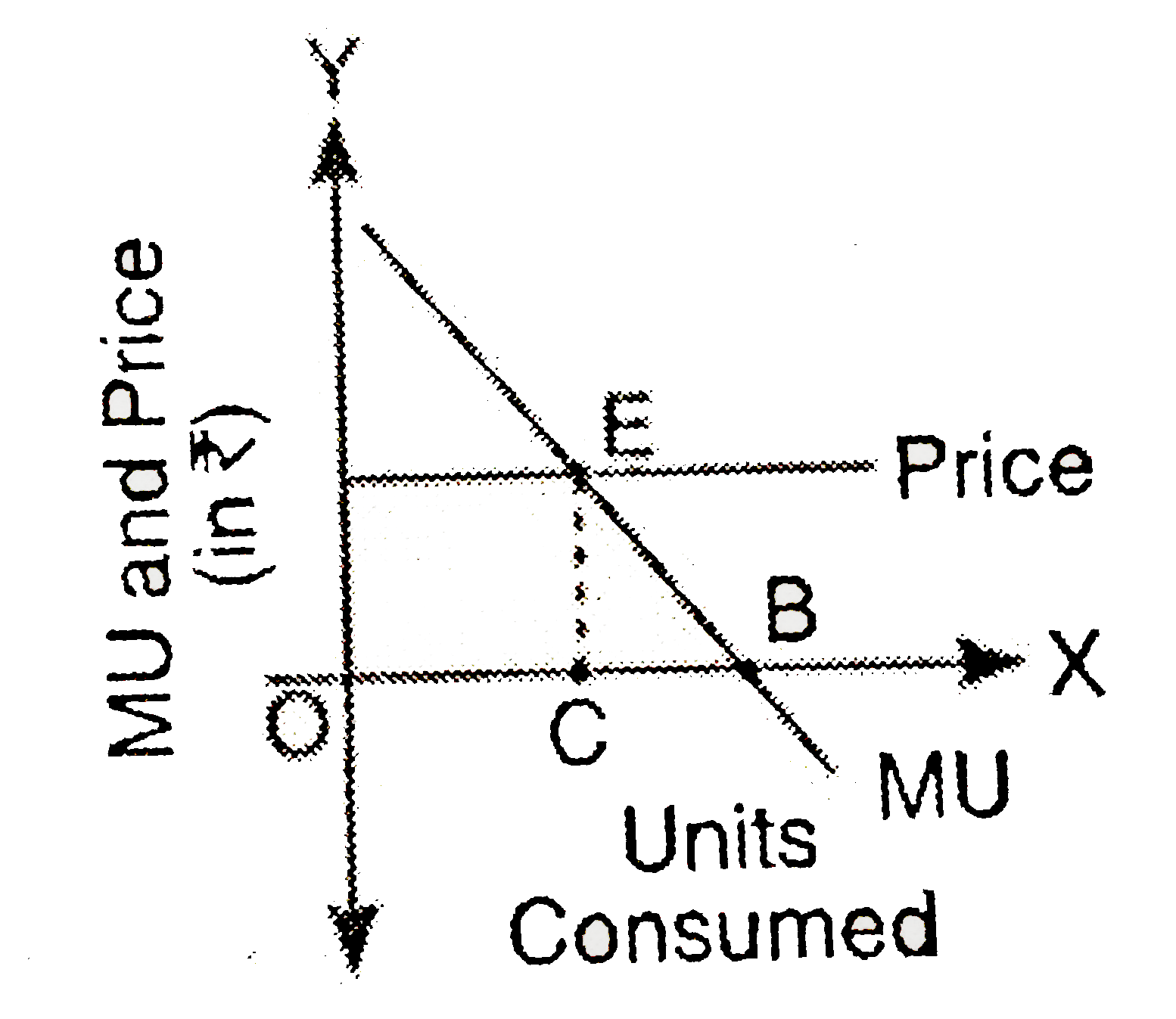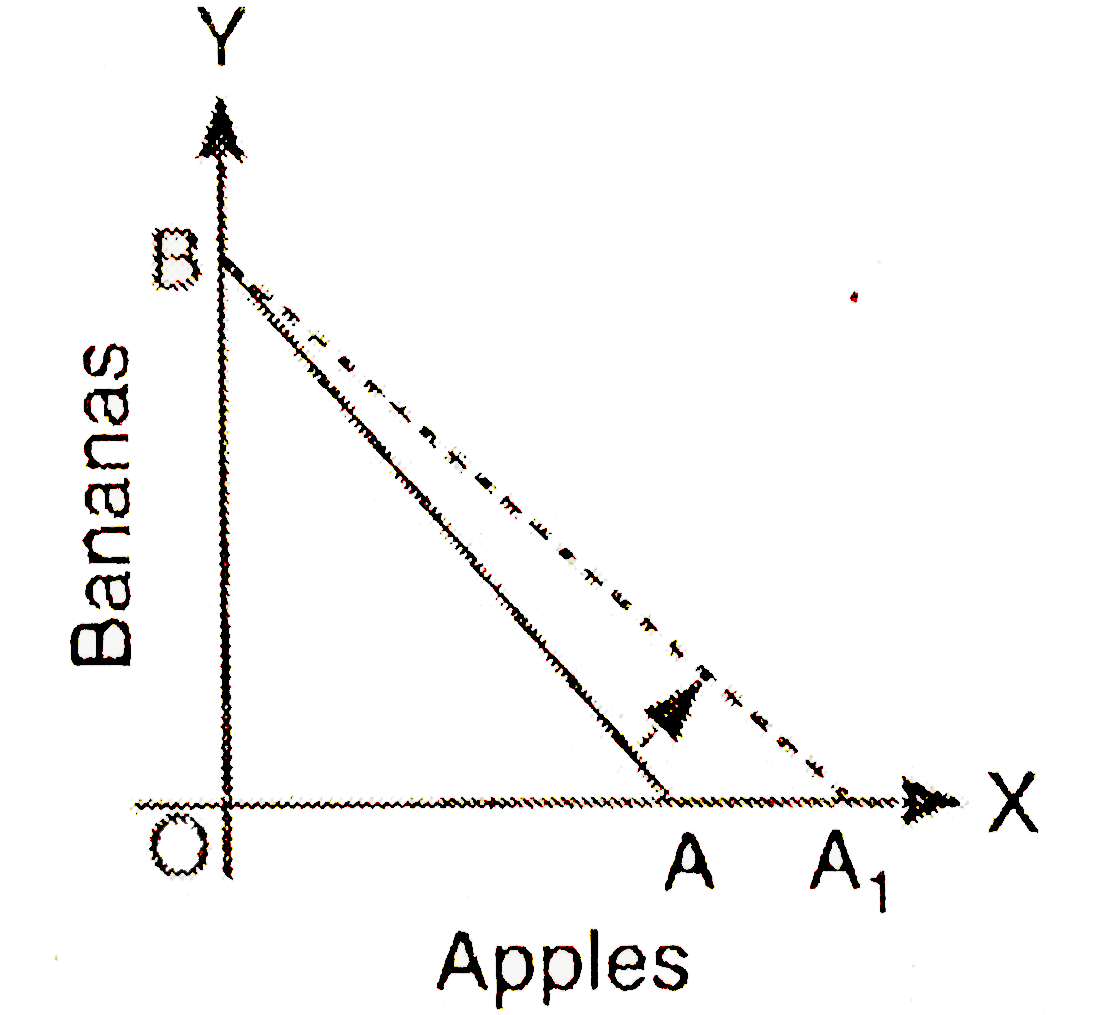Complete Solutions to Revision Exercise of chapter CONSUMER'S EQUILIBRIUM of Class 11 book with complete answers and questions
| Class 11 | ECONOMICS |
| Chapter | CONSUMER'S EQUILIBRIUM |
| INTRODUCTORY MICROECONOMICS BY SANDEEP GARG | Revision Exercise |
| Number Of Questions | 64 |
| Academic Year | 2023-24 |
Which of these is not a property of indifference curve ?
03:12View SolutionIndifference curves are convex to the origin because of:
02:50View SolutionThe necessary conditions under utility approach to attain consumer's equilibrium in case of two commodity is:
02:04View SolutionWhen we add up utility derived from consumption of all the units of the commodities, we get:
02:20View SolutionMarginal Utility (MU) in terms of money is equl to:
03:09View SolutionAccording to the Law of diminishing marginal utility, satisfaction obtained form consumption of each successive unit:
02:37View SolutionIndifference Map refers to:
02:25View SolutionBudget set inculdes:
03:41View SolutionIndifference curves are :
03:32View SolutionWhich of these is a conditions for consumer's equilibrium by indifference curve analysis ?
02:36View SolutionIf `(MU_(X))/(P_(X)) gt (MU_(Y))/(P_(Y))`, then to reach the equilbrium position, consumer should
02:34View SolutionIf the consumption of an additional unit of a commodity casues no change in TU, then the resultant MU is:
02:47View SolutionAn indifference curve is best described as a series of points which show:
03:45View SolutionTotal Utility is ______ at the point of satiety:
02:43View SolutionMarginal Utility (MU) of `n^(th)` unit is calculated as:
03:08View SolutionIn case of single commodity, consumer's equilibrium is achieved when:
02:38View Solution______ measures the slope of indifference curve.
03:22View SolutionIn the following diagram of budget line, point ''D'' represents :
 02:40View Solution
02:40View SolutionHow is TU derived from MU ?
03:41View SolutionWhat happends to MU when TU is maximum ?
03:09View SolutionAn indifference curve always:
02:23View SolutionIn case of cardinal utility approach, utility is measured in:
02:10View SolutionThe consumer will be in equilibrium where there is tangency between price line and indifference curve because at this point
02:26View Solution'Cardinality'' means utility can be:
02:36View SolutionThe slope of price line (in case of commodites X and Y) is given by:
03:14View SolutionWhich Law states that. ''When a consumer consumes more and more units of a product, the utility derived from each additional unit decreases''?
03:17View SolutionIn the context of Indifference Curve Analysis, MRS stands for:
03:26View SolutionFor consumer's equilibrium to be stable, the requirement is:
03:57View SolutionThe total utility derived by Shyam by eating 6 apples of 300 utils. Marginal Utility of the `7^(th)` apple is 30 utils. The total utility for 7 apples will be _____ utils
03:01View SolutionThe assumption of ''Constant marginal utility of money'' means that importance of money to consumer is:
02:13View SolutionWhen Economists speak of the utility of a certain product, they are referring to:
02:42View SolutionUtility :
02:11View SolutionA consumer in conumption of two commodities A and B is at equilibrium. The prices of A and B are Rs 10 and Rs 20 respectively and the marginal utility of product B is 50. What will be the marginal utility of product A ?
02:52View SolutionThe Law of Diminishing Marginal Utility will not hold good if Income of the consumer:
03:01View SolutionAs per Ordinal Approach
03:17View SolutionMarginal Utility :
03:33View SolutionMollie derives total utility of 10 utils after having 4 mangoes and total utility on consuming 5 mangoes is 9. What is her marginal for the `5^(th)` mango ?
02:05View SolutionAfter reaching the point of satiety, consumption of additional units of the commodity cause:
02:58View SolutionAccording to one of the assumption of Law of Diminishing Marginal Utility, there should be ____ between the consumption of one unit and another unit
03:08View SolutionBudget line shows:
03:28View Solution`MU_(X) " of " X " is " 40 " and " MU_(Y)` of Y is 30. It the price of Y is Rs 9, then price of X at equilibrium will be ______
02:00View SolutionThe farther the Indifference Curve is from the origin, then :
02:39View SolutionThe consumer is in equilibrium when Marginal Utility from a Commodity equals:
02:07View SolutionAn Indifference Curve represents all those combinations of two goods which give:
02:09View SolutionThe consumer is in equilibrium at a point where the budget line:
02:51View SolutionWhich of the shaded area in the diagrams below represent total utility ?
02:32View SolutionIf Marginal Rate of Substituation is constant throughtout, the Indifference curve will be: (Choose the correct alternative)
02:42View SolutionIf Marginal Rate of Substituation is increasing throughout, the Indifference Curve will be, (Choose the correct alternative)
03:43View SolutionA consumer consumes only two goods, If price of one of the goods falls, the indifference curve: (Choose the correct alternative)
02:46View SolutionA consumer consumes only two goods X and Y both Priced at Rs 4 per unit. If the consumer choose a combination of these two goods with Marginal Rate of Substitution equal to 4, then the consumer will :
03:07View SolutionA consumer consumes only two goods X and Y whose prices are Rs 3 and Rs 4 per unit respectively. If the consumer chooses a combination of the two goods with marginal utility of X equal to 4 and that of Y equal to 3, is the consumer in equilibrium, then the consumer will :
02:56View SolutionIn the following diagram, the situation of Consumer's Equilibrium and Point of Satiety are represented by the points:
 02:43View Solution
02:43View SolutionWhich Indifference Curve represents the highest level of satisfaction ?
 02:34View Solution
02:34View SolutionAn increase in income will lead to the following change in Bundget Line :
02:50View SolutionThe rotation of budget line in the following diagram is due to:
 03:18View Solution
03:18View SolutionMarginal utility is:
02:39View SolutionTotal utility is ______
03:51View SolutionWhich of the following can be referred to as 'point of satiety' ?
02:02View SolutionAt the Point of Satiety,
02:00View SolutionA consumer consumes only two goods. If price of one of the good falls, the indifference curve:
02:06View SolutionSlope of an indifference Curve is measured by:
02:28View SolutionIf `MU_(y) = 20, MU_(x) = 60`, Price of `Y = Rs 4`, then what will be the price of X at Equilibrium
02:08View SolutionMarket Rate of Exchange also denotes :
02:00View SolutionWhen marginal utility is zero, total utility is:
02:44View Solution
Revision Exercise questions and complete solutions for chapter CONSUMER'S EQUILIBRIUM of SANDEEP GARG ECONOMICS (HINGLISH) of Class 11
